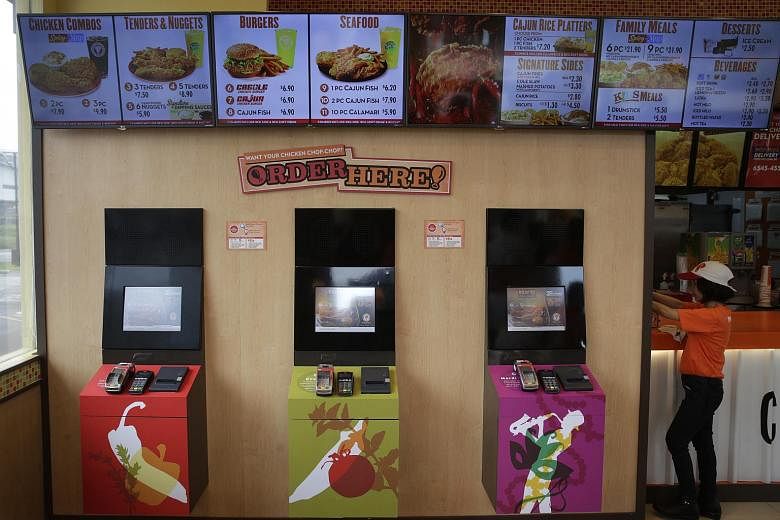As someone who patronises Popeyes' Punggol East branch frequently, I can attest to the effectiveness of the new self-ordering kiosks ("Popeyes' self-ordering kiosks serve up efficiency"; Thursday).
The long queues, especially at dinnertime, are now gone, and staff can concentrate on the preparation of orders, so that customers' waiting time is shaved by almost half.
The efficiency of automation has been shown not only in fast-food chains such as Popeyes, but also in several sectors, from supermarkets to food and beverage outlets.
Service has become faster, as more customers can be served in a given time. Indeed, automation is the future of our economy.
Last year, the net growth of Singapore's local workforce was but a measly 100 workers ("Job growth hits 17-year low, but real wages up 7%"; Jan 29), and labour productivity last year fell by 0.1 per cent, when measured as value added per worker ("Higher-skilled workers make up bulk of layoffs"; March 16).
With automation, Singapore's economy can maintain a Singaporean core in the face of a local workforce on the verge of shrinking, while not relying on foreign labour for growth.
Of course, the prospective shrinking of the workforce is a problem that has to be nipped in the bud with population policies, and will take time to resolve. But automation provides crucial interim alleviation for the negative effects of the manpower crunch.
Automation can also help to raise productivity in the long run. But, it is still crucial for workers to upgrade their skills to keep up with this automation in industries.
Singaporean workers increasingly need to learn to be able to handle automated technology, so that automation can serve its purpose - to benefit productivity.
Another change to complement automation would be the proliferation of e-commerce.
Automated transactions would help to slice labour demands further. We need to prepare for the possibility that cashiers may one day be difficult to employ.
There might come a time when automated payment is no longer sophisticated technology, but a mainstream system, instead.
Edward Ong Yu Xiang

